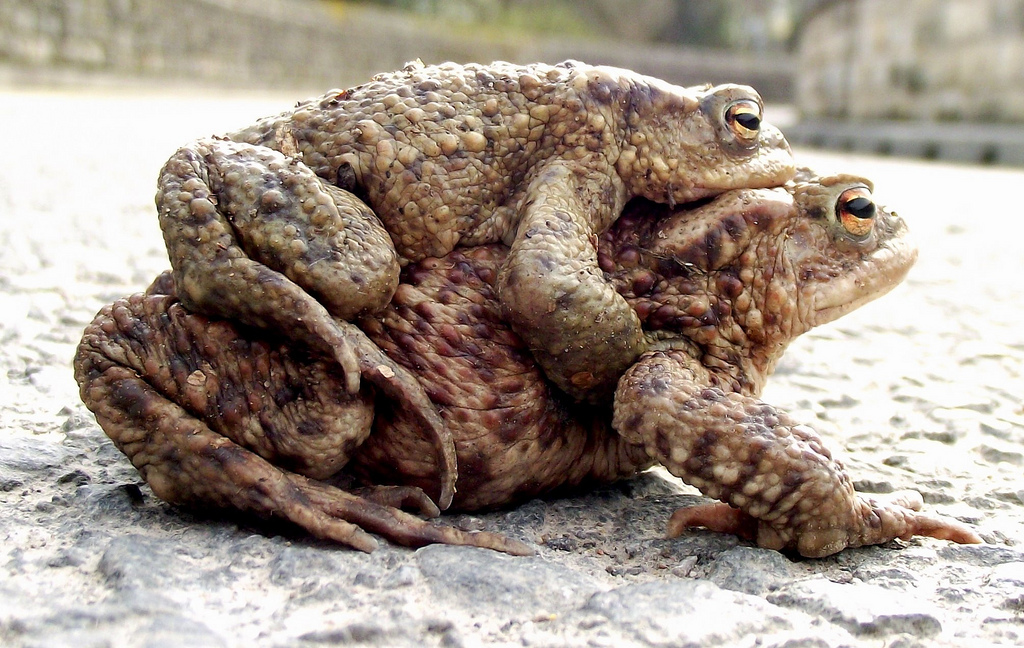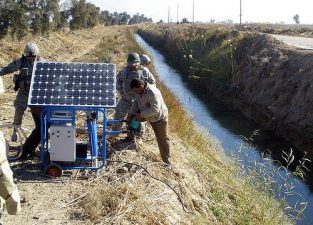 Honey, was that you moving, or should we take that as a sign for an earthquake? Image via Ryedo
Honey, was that you moving, or should we take that as a sign for an earthquake? Image via Ryedo
Grrrrrrrrrebit! This may seem a bit far fetched, but a scientific study carried out in the Journal of Zoology regarding the behavior of animals prior to the occurrence of a serious earthquake has found that some animal species, especially toads, may be able to predict the occurrence of an earthquake in enough time for people to prepare for one. For years, scientists have been studying the behavior of various animals prior to earthquake occurrences; and the fact that much of the unusual behavior seen in animals before earthquakes is also seen in other situations, and also confuses the over all picture. But if true, this news might benefit the earthquake prone Middle East.
Most studies of animal behavior in relation to predicting seismic occurrences have been with domestic animals, such as dogs, chickens, cattle, etc. And even these studies have only found that unusual behavior exhibited in these animals occurred within 2 or 3 days of an actual earthquake.
Studying animals in the wild is another matter entirely, however. Recent studies of animals such as rodents, fish, reptiles (especially snakes) and amphibians have divulged that these animals have exhibited unusual behavior for periods of up to two months prior to an actual earthquake occurring.
The situation of common toads, both males and females, appears to be even promising as studying their behavior in their habitats prior to a major earthquake appears to have a more promising in regards to sensing the earth’s natural geological instability in periods prior to earthquakes.
Toads are usually terrestrial amphibians, which are only found in water during breeding. By observing both male and female toads during this period, it was found that in periods leading up to earthquake occurrences, less toads were observed in the breeding areas, and even disappeared altogether in the days prior to the outset of a seismic tremor.
One theory appears to be that the animals could be detecting raised radon gas levels; and there have been many reports of radon anomalies in groundwater before earthquakes, although they do not occur 100% of the time.
Earthquakes occur more frequently in those parts of the world where the outer layers or plates of the earth’s crust, known as the lithosphere, are affected by inner, hot layers, known as the asthenosphere that finds a crack in which to rise as a hotspot. This causes the cooler, upper plates to shift, causing an earthquake tremor.
Some parts of world are more suscepable to this phenomenon occurring, especially in what is known as the “ring of fire” that pertains to the edges of the continents surrounding the Pacific Ocean, where the Pacific Plates under the ocean floor “collide” with those on the continental land areas. The recent 7.1 magnitude Chilean earthquake was a result of the Pacific Plate colliding with the land based South American Plate.
Regarding how toads figure into the general scheme of things, the scientific findings, as noted in the Journal of Zoology, found that 96 percent of male toads (Bufonidae) in a population abandoned their breeding site five days before an earthquake struck L’Aquila Italy, in April, 2009. The breeding site was located 65 kilometers from the earthquake’s epicenter.
The scientists said the number of paired toads at the site also dropped to zero three days before the earthquake.
Being Italian toads, and due to some natural occurrence interfering with the animal’s most favorite pastime (as noted in the photo), it must have taken a real outstanding event, like the earthquake, to interfere with la dolce vita. After all, some activities are better than eating flies – or whatever it is that toads eat. [Karin, Green Prophet’s editor, who studied amphibians and insects in university says that toads love ants.]
All that said, we have our own earthquake problems here in the Middle East, especially along the Syria-African Rift or Great Rift Valley which borders Israel, Lebanon, Syria, Jordan and the Palestinian Authority, as well as in the eastern Mediterranean.
So taking this into mind, maybe we should pay better attention to those ugly, warty looking things we occasionally find in our gardens.
More articles dealing with earthquakes and volcanos:
Middle East Aid Springs into Action Following Haitian Earthquake
San Francisco’s Sherith Israel Synagoge to Become Earthquake Proof
Middle East Airlines Wait for Volcanic Ash to Settle
Ormat Taps into Geo-Thermo Volcano Activity in Indonesia




Comments are closed.